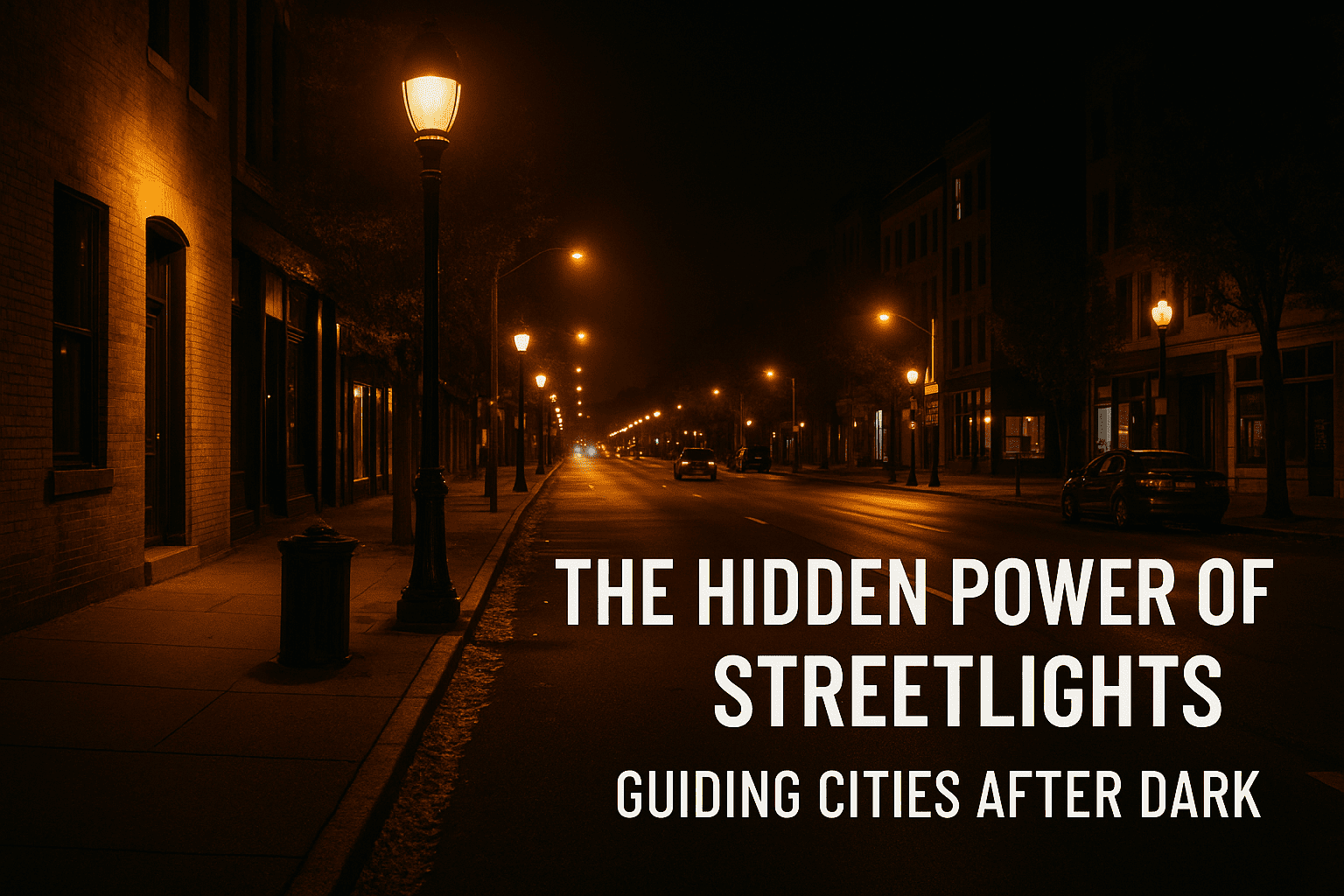As the sun dips below the skyline and cities begin to glow, millions of lights flicker on — silently watching, guiding, and protecting. Streetlights are so deeply embedded in urban life that we rarely acknowledge their existence. Yet, they play a critical role in public safety, civic aesthetics, social equity, and even ecology.
This blog explores the historical evolution, engineering brilliance, psychological impact, and future of streetlighting — one of the most overlooked public services that shape life after sunset.
A Brief History of Lighting the Streets
The earliest form of street lighting dates back to ancient China and Rome, where oil lamps were manually lit at dusk. In 1807, London became the first city to install gas street lamps. By the late 1800s, electric arc lamps lit parts of Paris and New York — ushering in the era of “The City of Light.”
Thomas Edison’s invention of the incandescent bulb revolutionized public lighting, making it safer, cheaper, and more reliable. Eventually, cities adopted sodium vapor lights for their yellow-orange glow and energy efficiency — a standard that persisted for decades.
The Engineering Behind the Glow
Modern streetlights are far more than poles and bulbs. Today’s infrastructure involves smart sensors, remote-control units, solar panels, and sophisticated urban mapping. Each light is part of a coordinated grid designed to:
- Optimize brightness
- Minimize energy use
- Enhance pedestrian and vehicle visibility
LED lighting has become the gold standard. LEDs consume up to 80% less energy than traditional bulbs, last longer, and can be dimmed or brightened remotely.
Smart lighting systems, used in cities like Amsterdam and Los Angeles, can adjust based on weather, traffic flow, or pedestrian movement. These systems help conserve energy while maintaining visibility where and when it’s needed most.
Public Safety: More Than Illumination
Multiple studies link well-lit environments with lower crime rates. Brightly lit areas discourage illicit activity and help people feel safer, especially women, the elderly, and night-shift workers.
Lighting also reduces traffic accidents. Proper street illumination improves drivers’ ability to see other vehicles, road signs, and pedestrians. According to the World Health Organization, improved road lighting can reduce night-time accidents by 30%.
But it’s not just about brightness. Poorly placed or overly intense lights can cause glare, creating more hazards than they solve. Good lighting design balances contrast, color rendering, and intensity.
Psychological Comfort and Urban Identity
Lighting influences how we emotionally perceive space. A dimly lit alley feels threatening, while a warmly lit plaza invites community gathering. In this way, streetlights act as silent urban narrators.
Cities like Tokyo and Copenhagen use lighting to define identity. Neighborhoods are bathed in unique hues to give character and assist wayfinding. Light art installations also transform bridges, parks, and buildings into landmarks, promoting civic pride and tourism.
Inequality in Illumination
Not all communities are lit equally. Lower-income neighborhoods often suffer from outdated lighting infrastructure, longer repair times, or fewer streetlights per block. This contributes to a sense of neglect and increases vulnerability to crime.
Several cities are now auditing their lighting equity. Programs in Detroit and Oakland have replaced thousands of old or broken lamps in underserved areas to promote safety and social inclusion.
Ecological Impacts and Light Pollution
While streetlights offer immense benefits, they also have ecological costs. Excessive or misdirected lighting contributes to light pollution, which:
- Disrupts nocturnal wildlife behavior
- Affects human circadian rhythms
- Obscures the night sky, hindering astronomy
Migratory birds, turtles, and bats are especially affected by artificial light. Urban planners now consider ecological light zones to mitigate harm — using shielded fixtures, motion sensors, and warmer color temperatures to reduce disruption.
Innovations Lighting the Future
Tomorrow’s streetlights may do much more than shine:
- Solar-powered poles with battery storage to operate off-grid
- Air quality sensors to monitor pollution
- Charging ports for electric vehicles and e-bikes
- Public Wi-Fi and 5G boosters integrated into the poles
- Emergency alert systems with speaker announcements and flashing alerts
In Barcelona, lampposts monitor noise levels and foot traffic to support smart city planning. In Seoul, interactive lights change color based on pedestrian activity and air quality.
Cultural Significance in Film and Art
From noir detective stories to romantic comedies, the streetlight is a cinematic symbol. Think of Gene Kelly dancing in the rain under a glowing lamppost, or the lone bulb swaying in a dystopian alley.
Streetlights evoke emotion — nostalgia, safety, solitude. Their golden hue is the backdrop of millions of memories: first kisses, walks home, late-night talks.
Artists like James Turrell and Olafur Eliasson have created immersive light sculptures, challenging how we perceive and interact with public illumination. These works blur the line between utility and art.
What You Can Do
- Report broken or flickering streetlights to your municipality
- Advocate for lighting equity in your neighborhood
- Support dark-sky initiatives that protect wildlife and restore stargazing
- Attend local council meetings discussing urban infrastructure and lighting upgrades
Final Thoughts: Light as a Civic Language
Streetlights are more than hardware — they are social infrastructure. They tell us where it’s safe to walk, where it’s welcome to linger, and where a community is seen and cared for.
They guide us through the literal and metaphorical dark. They represent one of the few public services that are constant, silent, and shared equally by all — or at least, they should be.
So next time you walk under that glow, remember: someone planned it, someone installed it, and someone ensures it flickers on each night. That quiet light is the heartbeat of a living city.

